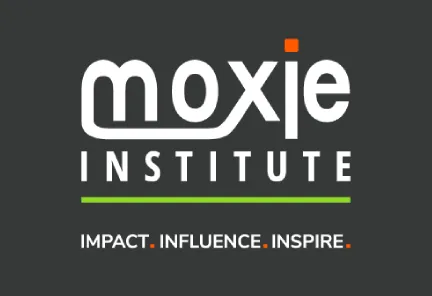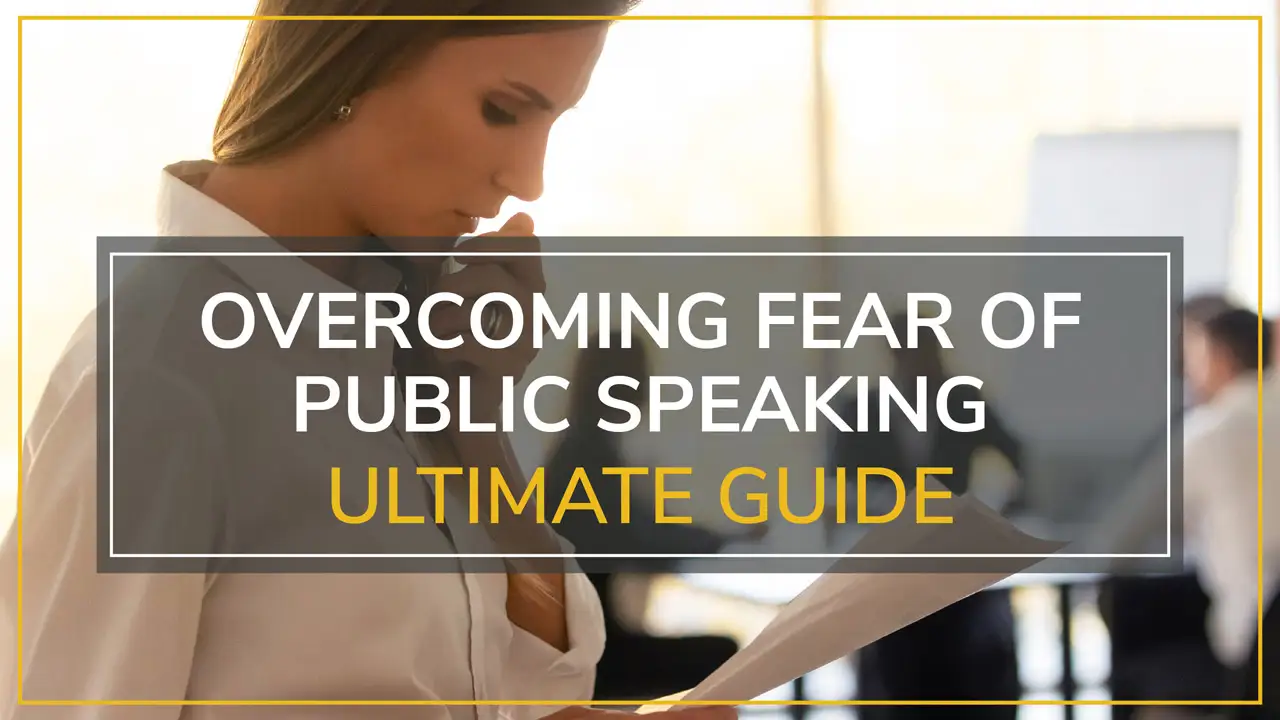Introduction: The Invisible Force That Transforms Leaders
Imagine the following scenario: Two executives of nearly identical qualifications walk into the boardroom to deliver the same high-stakes presentation. Both with impeccable credentials, impressive accomplishments and data to support their proposals. And yet within the first 30 seconds, all the people in the room have decided who they trust, which vision they agree with and whose advice they’ll follow.
What’s behind this on-the-spot, almost reflexive judgment? The secret lies in a skill of leadership that is conspicuously misunderstood but essential: executive presence.
Learning how to create executive presence isn’t some instantaneous magic prop or con, it’s the means by which you practice the authentic communication and behavior habits which say you are competent, reliable, and a capable leader to others. This is what we hear again and again at Moxie Institute, where we’ve trained thousands of Fortune 500 executives, C-suite leaders and emerging talent that executive presence training not only changed how they were perceived, but how they perceived themselves.
Through our brain-based approach rooted in performance psychology and adult learning theory, we have discovered the concrete, learnable skills that differentiate leaders who are leveraged and others who are not. Whether you’re getting ready for that big board presentation, running a high-stakes meeting, or on the verge of securing that next career advancing position, you’ll know just how to achieve the authentic executive presence that creates results.
In this post, you’ll find the 3 key elements of powerful leadership presence, gain insight into high-level executive strategies, and receive the same tools we provide our global leaders when we work with them in our executive presence training program.
What Is Executive Presence and Why It Matters
Executive presence is the power to connect with others in an authentic manner that motivates and inspires others to action. It’s just a constellation of how you look, how you speak and how you think — and the sum of those adds up to an impression of leadership capability and trustworthiness.
Studies from the Center for Creative Leadership show that executive presence determines as much as 26% of what it takes to get promoted to the senior leadership levels. But few professionals get any formal instruction in building these essential skill sets.
Based on our work with leaders from some of the largest multinational companies, we see that EP plays out differently in each culture and setting, yet has some universal roots. Leaders who exude executive presence exhibit:
- Calmness and presence of mind under pressure/high stakes
- Clear, direct communication that bypasses complexity
- Real, unearned authority Not authority based on title, or rank, or policies, but authority because they’re the only one in the world reading this book at this exact moment
- Emotion regulation that instills confidence in others
- Strategic thought that lifts up the conversation and decision-making
Fast Essential Insight: Executive presence isn’t necessarily about perfection; It’s about real confidence. The most persuasive leaders we coach combine competence and humanity — they display both strength and warmth.
The Three Pillars of Executive Presence
From our work with thousands of executives, we have found that there are three base components to authentic executive presence:
- Appearance and Physical Presence How you look and show up This is more than just what you wear. That encompasses posture, gesture, facial expressions and the overall energy you bring to a space. Social psychology studies show that people make instant judgments on competence and trust in the first few milliseconds of visual exchange.
- Communication and Vocal Authority Vocal Authoritativeness and Communication This second pillar is about both what you say and how you say it. That is, vocal inflection, the speed of delivery, level of distinctness, the storyteller talent, etc. and how sparing or liberal with silence. People with high vocal presence can be listened to and heard without having to shout, and they can move events with their voices when they need to.
- Gravitas and Executive Demeanor Gravitas & Executive Presence It’s the soft arena, but the most potent, in terms of gravitas which embodies EQ (emotional quotient), decision making and pressure handling in the strongest way. It’s what leads others to want to follow your lead and believe in your judgment.
The Neuroscience Behind Commanding Attention
The brain science of executive presence can cut YEARS off your development. Research in neuroscience has shown that when we come in contact with a person with a strong presence, our brains activate what are known as “mirror neurons,” which effectively mirror in our brains their emotional state and energy level.
This is why some leaders can enter a room and enliven it, while others are unable to capture the room, despite having something important to say. Once you know how to activate these neural responses, you can create a sense of presence that is earned, rather than faked.
In our executive coaching programs, we teach clients to use these neuroscience principles in this way through a set of methodologies:
- Ready and deliberate entrance and placement that declares leadership when you appear
- Vocal anchoring to create neurological excitement and focus
- Tactical pause and silence that adds weight and anticipation
- Match and mirror that generates subconscious rapport and trust
Pro Insight: Executive presence is most powerful because of its multiplier effect. When you can show up in the world as your most empowered, confident and authentic leader, it’s not only how you’re perceived differently by others—it’s how much more confident and decisive you feel as well.
How to Develop Executive Presence: Core Components
Constructing such executive presence entails deliberate focus of certain behaviors and communication. Here, based on what we’ve observed in training thousands of leaders, are the key pillars that contribute to commanding leadership presence.
Physical Presence and Body Language Mastery
The way you look speaks long before you ever say a word. Studies of nonverbal communication reveal that body language accounts for 55% of communication impact… but few leaders or speakers have ever been trained in executive-level physical presence.
Fundamental Building Blocks of Physical Executive Presence:
Posture and Stance Stand with feet hip-width apart, weight distributed evenly, and spine straight. Here we have what we would call “grounded authority” — stability that others can feel beneath the level of conscious awareness. No shifting around either, that might be a sign of nervousness, or lack of confidence.
Strategic Movement And Gesture Movement On purposeful movement will focus attention more than on static one. Make purposeful movements as you speak that reinforce what you are saying, generally staying within your presentation box (in the area from your waist to your shoulders and slightly beyond if you are comfortable moving).
Eye Contact Patterns Master the lighthouse technique we teach at our executive presentation training: methodically sweep across the group as you speak: make eye contact with people for 3-5 seconds, then move to someone else. This is building rapport while being confident.
Facial Expression & Micro-Expressions Your facial expressions should match your message and resonate trustworthiness broadly. Practice what we’ve come to call “composed confidence” — a subtle forward lean that communicates engagement and relaxed facial muscles that communicate comfort with authority.
Territory and Space Management Space Ownership feel relaxed in that space when it comes to EP you see comfortable rulership of space. Stand or sit as if you belong to the room, taking up as much space as you need without trying to overpower or threaten others.
Vocal Authority and Communication Skills
As a woman, your voice is one of the most effective (and highly underutilized) tools in developing executive presence. Voice instructors who teach on Broadway and train Hollywood actors employ many of the same strategies that we do in executive communication training.
Vocal Elements of Executive Presence:
Optimal Pitch and Resonance The Right Pitch and Resonance Call from your chest voice to convey authority and relaxed confidence. Studies of voice suggest that because of the representation of biological sex through pitch, low frequencies have strong associations with leadership and dominance globally.
Strategic Pace and Timing Strategic Pace and Timing Speak about 10-15% slower than your everyday speaking rate. This shows you are not afraid of silence and it allows others to think about the important info. Employing strategic pauses before and after important points to emphasis can be effective.
Volume and Projection Volume and Projection: Voice filling the space freely with as little strain as possible. Breathe with your diaphragm to enable steady vocal projection. The aim is to be heard clearly by all without sacrificing conversational intimacy.
Articulation and Clarity Articulation and Clarity Well-enunciated consonants and precise vowel sounds convey authority and attention to transferability. Articulate tongue twisters and vocal warm ups to develop the muscles for pronunciation.
Vocal Variety and Emphasis Vocal Variety and Emphasis Instead of a monotonous tone, vary pitch, pace, and volume to help sustain interest and stress significant points. But be consistent overall, to create a vocal identity of stability and reliability.
Emotional Intelligence and Composure
Perhaps the most important dynamic of executive presence is emotional control — the capacity to keep a cool head, think and act (not react) in moments of pressure.
Components of Executive Emotional Intelligence:
Self-Awareness Under Pressure Pressure Self Monitoring Practice the skill of noticing your emotional state throughout the day and particularly when under pressure. This might be feeling where you are holding tension in your body, any changes in your voice or any adjustments in the way you are thinking.
Strategic Response vs. Immediate Reaction Strategic Response vs. Immediate Reaction Insert an interruption or break between stimulus and response. When you are dealing with a tough question or a tough situation, take a conscious breath before reacting. This little micro-pause is often what stands between executive- level composure and reactivity.
Empathetic Authority Empathetic Authority Know how to balance strength with true regard for others’ points of view. The most compelling leaders we work with are decisive while being open to receiving input and feedback.
Stress Recovery and Resilience Recovery and Resilience Establish a wellbeing toolkit of activities that help you recover and re-energise after a stressor, such as deep breathing or meditation. This could be anything from breathing exercises, straightforward physical grounding methods or how they can reframe their mindset.
Authentic Confidence vs. Arrogance True Confidence vs. Arrogance Real executive presence is about confidence without defensiveness, authority without condescension. Practice being very sure of your ability while being authentically interested in other people’s insights.
Essential Practice Tip: Practice on Your Own Do videotaping of yourself in low stakes’ settings to see what your natural habits are, and then begin to ratchet in the executive presence techniques over progressively more challenging settings.
The Strategic Communication Framework
It’s not good enough to simply look and sound the part — you also need to communicate with strategic clarity and a compelling vision that motivates and captivates others to action.
Crafting Your Executive Message
In our work with C-suite executives, we’ve seen that what’s required at the executive level is markedly different from what’s needed at the operational or technical level. Executive messages are about establishing a vision and strategy, not just transferring information.
The IMPACT Framework for Executive Communication:
I – Intention Setting Start with clarifying your own intention whenever you want to communicate. Are you educating, charming, motivating, or commanding? It gives your speaking a concise edge throughout.
M – Message Architecture Derive executive-level clarity to your communication:
- Start with the topic at hand: content or recommendation
- Add supporting argument in the order of importance
- Answer potential questions or objections
- End with action items or calls to action
P – Personal Stakes and Significance Assure others that this message is important for them with personal and professional implications. Executive presence is not just about linking company goals to personal needs.
A – Authentic Authority Talk from what you genuinely know and not use excessive content or defensive spiel. Cite projects which show that you are good at what you do.
C – Compelling Vision A vision for the future that inspires others to join in. Apply storytelling for business practices to keep the story meaningful and memorable.
T – Trust-Building Language Use language idiosyncrasies to instill confidence in your leadership. This means not hedging, speaking with the necessary confidence and being comfortable with accountability.
Advanced Storytelling Techniques
This rarefied executive storytelling transcends the mundane. It takes nuanced understanding of human psychology and skill in crafting your message.
Executive Storytelling Elements:
Strategic Story Selection Pick stories that echo your primary leadership brand and exhibit relevant competencies. Every story should have several purposes, entertaining the audience, but also making a point and enhancing your credibility.
Stakeholder-Centered Narratives Tell your stories in terms of how you impact stakeholders, not how good you are personally. This indicates strategic thinking and stakeholder focus.
Conflict and Resolution Sophistication Many senior-level stories are dealing with a problem that needed to be solved at many levels. Show how you think, not just what you think.
Data Integration Integrate quantitative evidence with narrative. The most persuasive executive communication marries emotional impact with analytical power.
Future-Focused Implications Connect experiences in the past to possibilities in the future. Leverage storytelling to empower others to imagine the possibilities and where they play a role in it.
Professional Development Quick Win: Run your professional story three times over for three different audiences (peers, reports, senior leaders). See the difference in focus and the content depending on your audience.
Common Executive Presence Obstacles
Even highly successful professionals will face anticipated impediments to executive presence. Here’s what we found, from our work coaching thousands of leaders, to be the top blockers and what to do about them.
Obstacle 1: Imposter Syndrome and Self-Doubt A common challenge for high-performing professionals is feeling like an imposter when it comes to demonstrating executive presence behaviors. They fear that confidence will read as cockiness or that others will detect a charade.
Solution Strategy: Reconceptualize executive presence as genuine self-assertion instead of performance. Begin with scenarios you truly feel at ease in and only then move out of that comfort zone. Again, building that executive presence is in many ways about transforming into the leader you already are, not pretending to be somebody else.
Obstacle 2: Cultural or Gender-Based Presence Challenges The cultural context and gender identity may require alternative pathways of developing executive presence that is authentic and consistent with organizational expectations.
Solution Strategy: Emphasize general factors that matter in being an effective leader (clarity, composure, strategic) but keep it true to your culture or your personal style. Start a 1:1 relationship with an executive presence coach who gets that diversity and inclusion are a struggle.
Obstacle 3: Technical Expertise vs. Executive Communication The majority of qualified technical geniuses have trouble speaking the language of the executive suite, which is often dense and data heavy.
Solution Strategy: Learn about “executive translation”—skills to convert complexity into strategic insights and clear recommendations. Apply the “elevator test”: can you deliver your key message in 30 seconds, 2 minutes, and 10 minutes?
Obstacle 4: Perfectionism Paralysis Some people get so caught up in not messing up that they come across as tentative or are simply over-careful, killing their executive presence.
Solution Strategy: Adopting a mindset of “strategic confidence” — the willingness to make well-reasoned decisions based on the information you have now, but being willing to change course if need be. Get in the habit of making unambiguous recommendations even when you don’t have all the data.
Obstacle 5: Inconsistent Presence Across Contexts Indeed, too many leaders appear to “show up” powerfully in some contexts, while seeming to lose their prowess in other difficult settings or with different stakeholders.
Solution Strategy: Train non-situational presence skills by gradual exposure and practice. Begin with low risk situations and increment them in difficulty and stress while keeping the presence behaviors.
Critical Insight: Developing Executive presence is not a matter of shedding something (your real personality) but revealing something (your authentic leadership) more powerfully and consistently.
Practical Implementation: Your Executive Presence Action Blueprint

Executive presence is something that needs to be learned and practiced in a structured way with a progression of skills over time. Here’s your 3 month strategic implementation plan for the next 90 days.
Week 1-2: Foundation Assessment and Awareness Building
Daily Practice (15 minutes):
- Film yourself speaking about a 2 minute professional update in different atmospheres
- Posture as if you were in the “executive stance” during phone and virtual calls
- Use the 3-second delay to answer questions
Weekly Goals:
- Total self-assessment of present presence strengths and growth areas
- List 3 examples of times when more presence would result in better results
- Start doing breathing and postural exercises as a part of practicing strategies
Week 3-4: Physical Presence Integration
Daily Practice (20 minutes):
- Practice intentional ways to enter and ways to exit
- Some exercises to work on your voice are vocal projection and lower register speaking
- Use strategic eye contact in the meeting room
Weekly Goals:
- Master the “grounded authority” stance in sitting and standing positions
- In the next team meetings, practice the lighthouse eye contact exercise
- Get used to strategic pauses and silence
Week 5-6: Communication Refinement
Daily Practice (25 minutes):
- Apply the IMPACT process to selected professional situations
- Practice executive-level storytelling with examples from your own career
- The message clearness and crispness increased in quality
Weekly Goals:
- Have strategic communication structure to all formal presentations
- Refine your abilities to communicate technical components of the infrastructure to executive personnel
- Expand your library of career stories that will show your leadership skills
Week 7-8: Emotional Intelligence and Composure
Daily Practice (20 minutes):
- Use emotional control strategies prior to triggering interactions
- Working on response (strategic) vs reaction (immediate) patterns of response
- Create a stress reset practice that’s your own
Weekly Goals:
- Keep it together in at least one difficult professional situation
- Practice real confidence with no aggression
- Practice the empathy of the stakeholder in crucial conversations
Week 9-12: Integration and Advancement
Daily Practice (30 minutes):
- Broaden the skill set of the full range of executive presence in tougher and tougher situations
- Ask the opinion of trusted colleagues or mentors
- Keep on tweaking your style of presence with greater and greater sensitivity to yours
Weekly Goals:
- Show up in multiple professional spheres
- Conduct at least one high-stakes meeting or presentation with executive presence capabilities
- Develop your own plan for executive presence for the quarter ahead
Implementation Success Accelerator: Choose one habit per week to track and focus on your consistency. For instance, Week 1 might include practicing grounded posture by the phone and reaching 80% consistency by Friday.
Advanced Techniques: Performance Psychology for Leaders
The most effective executive presence integrates learned skills and psychological levers taken from high performance sports and the performing arts. These more advanced tricks can really help progress you along.
Cognitive Priming for Executive Performance
Here are some mental-preparation strategies to help put yourself in the right mental state during high-stakes interactions:
Pre-Meeting Visualization: Take 5 minutes to visualize yourself showing your executive presence to full advantage in the upcoming scenario. Visualize yourself talking lucidly, with a steady manner and reaching the objectives of your communication.
Confidence Anchoring: Establish a physical or mental “anchor” (e.g., touching one thumb to the forefinger) while thinking of a time of high professional confidence. Practice making these connections so you can tap into that confident state if necessary.
Identity Reinforcement: Before challenging situations, take some time to reinforce to yourself your role and expertise. Think “I am here to offer great value” instead of dwelling on mistakes.
Stress Inoculation for Executive Resilience
Developing executive presence under pressure is about exposure to ever more difficult situations, in small increments:
Progressive Pressure Training: Practice presence skills in low-stakes situations before ramping up the pressure and complexity. This is nothing but confidence and competence arising mutually.
Recovery Rehearsal: Train to do something very specific to recover if you start to lose your presence while talking to someone. That could be deep breathing, shifting their perspective, or just taking a moment.
Performance Review Integration: Reflect in writing after every significant interaction for 5 minutes about what was effective and what you would do differently. This speeds up learning and improvement.
Energy Management for Sustained Presence
It takes a lot of mental and emotional energy to have executive presence. Create mechanisms to operate at peak efficiency:
Strategic Energy Investment: Locate the interactions you can have that will have the most impact, and make sure you come to them on fire. For some, that may involve booking key meetings during the times of day that align with their natural peaks.
Recovery Protocols: Create routines to recoup your energy and gather your composure between tough exchanges. That could mean quick meditation, some form of movement or a mental reset exercise.
Authentic Energy Expression: Understand how to express your natural energy and enthusiasm in a way that is supportive of your executive presence rather than detracting from it.
Specialized Insight: The greatest leaders we see understand the concept of executive presence as being similar to training for a sport — with consistent practice, graduated progress, and disciplined development of positive habits.
Measuring Your Executive Presence Progress

To develop executive presence you need objective feedback and visible measures of improvement. Here’s how you can monitor your progress in an organized way.
Quantitative Measurement Strategies:
360-Degree Feedback Integration: Incorporate targeted executive presence questions into any formal or informal 360-feedback process. Have colleagues assess how effectively you command attention in meetings, communicate with authority and maintain composure under pressure.
Meeting Impact Analysis: Monitor how you influence meetings, including how often your ideas are adopted, your degree of collaboration, and whether you were able to drive the discussion.
Presentation Effectiveness Metrics: In formal presentation situations, try and gauge the level of interest after you’ve made your pitch — are they asking any questions? is there anything to follow up on? are they implementing your suggestion?
Qualitative Development Indicators:
Stakeholder Response Patterns: Observe the difference in how we interact with them. Are the people paying more attention? Do they ask for your input more often? Do they demonstrate more faith in your leadership?
Personal Confidence Evolution: Note your internal confidence and comfort level throughout different professional scenes. The emergence of executive presence usually starts with internal transformation that subsequently is demonstrated externally.
Crisis Response Capability: Be vigilant how committed you are to show up for your life against adverse conditions or under pressure. This may be the hardest test of executive presence development.
Self-Assessment Framework:
Every week, rate yourself on the following from a 1-10 scale:
- Dressed the part and appearing in person
- Power of voice and clarity of speech
- Control under pressure with emotions
- Ability to think strategically and articulate vision
- True confidence with humility
- Influence and engagement of stakeholders
Feedback Integration Process:
Monthly Check-ins: Set up brief discussions with selected mentors or peers to talk about how you are growing your Executive Presence and to get feedback on how you are putting these practices to work.
Video Review Sessions: Film yourself in different professional scenarios and examine for elements of presence. This is objective data about the progress you have made.
Professional Development Tracking: Record evidence of where, specifically, increased executive presence resulted in better results or opportunities.
Strategic Development Insight: The development of executive presence is typically not linear. Sometimes you will make quick progress in some areas and slow progress in others. Instead, focus on regular practice, not on getting things perfect.
Explore working with an executive presence coach to receive unbiased observations and fast track your progress with targeted coaching and skill-building exercises.
Frequently Asked Questions
What is executive presence and how do you develop it?
Executive presence is the ability to signal leadership potential, credibility, and capability through your appearance, body language, and emotional self-control. To build your executive presence, pay attention to three main areas: physical presence such as posture and voice as well as professional appearance, communication skills such as clarity, strategic thinking and compelling storytelling, and emotional intelligence like poise under pressure and genuine confidence. In fact, executive presence contributes 26% of what it takes to get promoted to senior leadership positions, according to the Center for Creative Leadership. Practice with skill is the best “way to learn” in successive stages of difficulty.
How long does it take to develop a strong executive presence?
Many executives report a remarkable difference in presence in this 30-60 day focused path, though true mastery of presence requires 6-12 months of diligent attention. The time line would depend on your starting point, the number of practices you had, and whether you are having professional coaching or not. At Moxie Institute, we’ve found that from working with clients who use initial training in combination with daily practice and follow-up feedback, the most dramatic and lasting improvements are gained. The trick is to build skills incrementally, from the bottom up: first foundational tools like posture and vocal authority, and then the more complex skills of strategy, and maintaining emotional control under duress.
Can introverted professionals develop executive presence?
Absolutely. Some of the most interesting executive presence we’ve seen is based on introverted leaders capitalizing on their natural abilities and learning a few presence skills. One of the key behaviors of introverted leaders is the ability to listen, deeply listen, referring to thoughtful communication, strategic listening, and calm composure—all crucial elements of executive presence. The trick is to cultivate a presence that’s true to your character and not to copy extroverted styles of leadership. Concentrate on silent self-assuredness, appropriate use of silence, and considered contribution instead of monopolizing the airwaves. They discover that actually the executive presence training is exactly what they didn’t even know they wanted — it gives them structure and specifics to use, instead of learning how to be artificial.
What’s the difference between executive presence and charisma?
Executive presence should be grounded in competence, dependability and real leadership ability where charisma might be more personality-driven and emotional. EP has everything to do with trust being developed through demonstrated competence and consistent behavior – and “Charisma” can just be immediate attraction that doesn’t necessarily mean you’re capable of leading. The research indicates that executive presence is more strongly correlated with long-term leadership success, because it’s based on substance, not just personal magnetism. But the most powerful leaders are able to marry the two—led by executive presence on the one hand and a generous dose of charisma on the other to lift them up and move others forward with them. Executive presence can be systematically developed through specific skills and techniques, while charisma is often felt to be a gift, though both can definitely be enhanced through professional training.
How do you maintain executive presence during difficult conversations?
Presenting with poise in difficult situations requires specific preparation and real-time management techniques. Picture yourself before you go into tough conversations, calm down and try to let your mind rehearse composure. When you approach the interaction, try to focus on breathing and breathing slowly, taking breaks before you respond and trying to appear as “open” or calm even when discussing controversial topics. Practice pausing between what someone says and your reaction to it. Drop your voice into its lower register and slow your rate down to speak with calm authority. When the blood goes up, recognize the stakes and try to stay in solution space, not problem space. Where you can do this is by staying curious around how our lens might be helping others to think differently, while being definitive in your own views and recommendations.
What are the biggest mistakes professionals make when trying to develop executive presence?
But the reality is people are often too wrapped up in how they look or aren’t speaking loudly, when in reality the issue 99% of the time is that they have no confidence or are not competent. Many professionals also seek to model themselves after other leaders, rather than creating presence around their own persona and strengths. Another common mistake is being a hot and cool leader: being strong and present when comfortable, but losing it when the stakes are high. Some professionals also confuse arrogance with confidence, sounding more condescending than authoritative. Also, executive presence has an emotional intelligence piece and many people focus on the communication and probably not focus on the self awareness and empathy that actually has true executive impact. Skills based training with authentic self-expression and adequate training in divergent contexts seem to be the most effective way to promote both skilled performance along with authentic leadership.
How does executive presence training differ from general communication training?
Executive presence training specifically on communicating and behaving at a leader level to convey competence, authority and trustworthiness to executive decision-makers. Though generic communication training may focus on rudimentary speaking and listening skills or small talk, executive presence training revolves around tactical communication, thinking and decision making under pressure, and the path of psychological influence a leader takes. It is built on a foundation that leverages performance psychology, neuroscience, and adult learning theory to build connection, leadership credibility, and communication skills. It’s also about adapting to context — how to maintain leadership breadth across stakeholder types and difficult situations. It is more than just being heard, when the going gets tough, they want to be trusted, respected, followed as a leader.
Can executive presence be developed virtually or does it require in-person training?
Virtual training can build an executive presence, but there are some benefits to in-person coaching for working on physical presence and getting real-time feedback. Virtual executive presence training is also more heavily focused on vocal authority, virtual presentation skills, and on-camera presence, skills that are becoming more and more crucial in today’s digital work environment. In the case of executive presence, many aspects, such as strategic communication, emotional control and message creation, transfer quite nicely to the virtual world. But Executive Presence is best developed in the most holistic, blended way, with a balance of building skills virtually followed by time spent in-person practicing. The important thing is that such practice is consistent across virtual and face-to-face settings, because executive presence should always be original and the same, no matter the channel.
How do you know if your executive presence training is working?
Good executive presence development generates tangible internal and external change that you can quantify. Internally, you’ll have more confidence in competition, better problem-solving skills under stress, and a higher tolerance for taking on leadership responsibility. On the outside, coworkers will ask you for your opinion more often, your ideas will be executed more often, and people will have more confidence in your ability to be a leader. The specific signs are being asked to sit in on more strategic meetings, getting told how effective you are at communicating, and having others begin to listen more when you speak. You can also monitor key performance indicators such presentation impact, meeting influence and 360 degree feedback scores. The most consistent indicator is maintaining a strong presence in the face of competing interests of different groups.
What role does emotional intelligence play in executive presence?
Authentic executive presence is rooted in emotional intelligence, which is the capacity to be self-aware, to control and understand emotions, and to lead with empathy in a way that builds trust with others. Leaders who have high emotional intelligence have the ability to keep their cool when things get into high gear, they’re able to respond over react, and they can truly empathize with the perspective of others while still maintaining their own sense of power. Neuroleadership studies have found that emotional intelligence is correlated with the quality of decision making and with stakeholder trust. It enables leaders to read situations well, flex their communication style to the needs of different audiences and to establish psychological safety where others can openly engage. Executive presence without emotional intelligence can come across as phony or manipulative, not genuine or trustworthy. The best executive presence is self-confidence and self-competence leavened with authentic empathy and self-awareness.
Ready for some leadership impact? Our executive presence training workshops integrate science-based methods with individualized coaching to help you to cultivate true, compelling leadership presence. Book your free strategy call today to learn how we can help you succeed as the leader who captivates and compels.
TAKE THE FIRST STEP TO MASTER POWERFUL NEW SKILLS
Schedule an easy 30-minute call using our using our calendar. We’re here to help!









